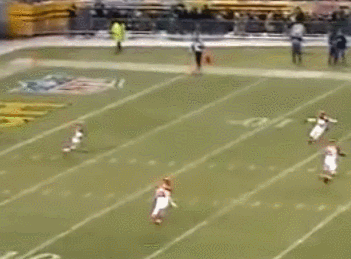KK84
New member
That's correct Sarlaac, unless they are in fact holding hockey sticks first.

NFL Fair Catch Rules":ammdbmcf said:The member of the receiving team must raise one arm a full length above his head and wave it from side to side while kick is in flight. (Failure to give proper sign: receivers’ ball five yards behind spot of signal.) Note: It is legal for the receiver to shield his eyes from the sun by raising one hand no higher than the helmet.
No opponent may interfere with the fair catcher, the ball, or his path to the ball. Penalty: 15 yards from spot of foul and fair catch is awarded.
A player who signals for a fair catch is not required to catch the ball. However, if a player signals for a fair catch, he may not block or initiate contact with any player on the kicking team until the ball touches a player. Penalty: snap 15 yards.
If ball hits ground or is touched by member of kicking team in flight, fair catch signal is off and all rules for a kicked ball apply.
Any undue advance by a fair catch receiver is delay of game. No specific distance is specified for undue advance as ball is dead at spot of catch. If player comes to a reasonable stop, no penalty. For penalty, five yards.
If time expires while ball is in play and a fair catch is awarded, receiving team may choose to extend the period with one fair catch kick down. However, placekicker may not use tee.
Best way is to watch games very closely... and learn for yourself. The rules of American football are very complex.gallacher88":2h3h74hf said:Cheers guys . So many little rules to remember but good people helping out the newbie. Still havin trouble with the clock tho. A get if the ball is out of play it stops and the last 2min it keeps runnin but doesn't always seem to be the case. Like if one team is winning by a margin and they hav possession the clock goes down fast but wen a team is desperate for points and hav possession it doesnt . Might be jus missin something. Sure av seen the clock run rite at the start of a quarter and was sure the ball was out play.
